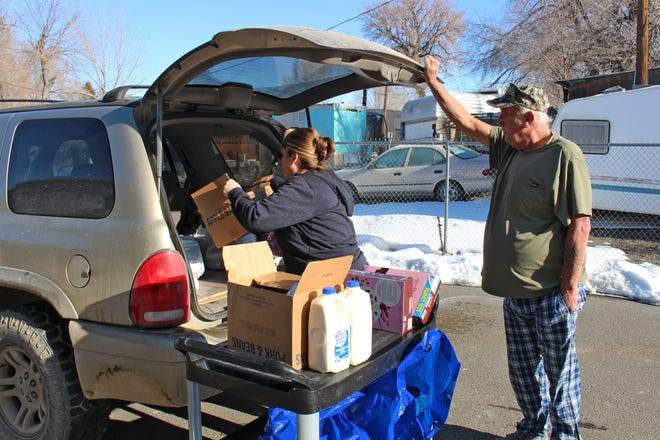
Now that additional pandemic-era cash assistance for food has ended along with the health emergency, nearly 42 million Americans are feeling the impact, particularly with inflation still high.
Those using Supplemental Nutrition Assistance Program (SNAP), formerly called food stamps, are buying 12% fewer groceries than a year ago. And the share of people who said their benefits now last two weeks rose to 58% in April from 41% in September, according to a survey by marketing researcher Numerator of more than 1,250 respondents.
SNAP shoppers are buying less and increasingly looking for value by trading down to private-label brands to stretch their SNAP money for groceries. However, those budgeting measures have expanded to all categories, including infant and home and garden departments, Numerator said.
“With a minimum of $95 per recipient lost every month and an estimated 41 million SNAP recipients, brands and retailers will face a $46-plus-billion gap in consumer spending in the year to come,” Numerator said.
Working for SNAP:Are work requirements part of the debt ceiling talks? Here’s what the GOP, Democrats want.
Protect your assets: Best high-yield savings accounts of 2023
Debt ceiling could hit food:Here’s how the debt limit crisis could affect food stamp benefits
What happened with SNAP benefits?
At the onset of the COVID-19 pandemic in 2020, Congress passed the Families First Coronavirus Response Act to temporarily boost SNAP benefits to help low-income families weather the crisis that pushed millions of people out of jobs. All SNAP households received with an additional $95 in benefits, or an additional benefit valued up to the maximum benefit for their household size, whichever was greater.
The last extra SNAP benefits expired at the end of February, meaning March was the first month people had to live without the additional cash.

How are SNAP recipients coping?
SNAP users are doing two things: They are buying fewer items and opting for less expensive brands for the things they purchase.
“Due to limited funds, those receiving SNAP benefits are becoming unable to purchase items in bulk and are forced to prioritize lower total prices,” Numerator said.
Every single grocery category saw a volume decline in March, although that also occurred in nongrocery items, where SNAP isn’t used, Numerator said. SNAP recipients bought about 30% fewer toys in March compared with a year earlier, it said. Tools and home improvement and electronics purchases fell by more than a quarter, and home and garden and infant items declined by about 25%.
Along with buying less, SNAP users hunted for bargains. Consumers are taking longer to shop, said Rajeev Sharma, founder of VideoMining, which tracks and researches customer in-store behaviors. That usually means they’re comparing prices and products, which leads to more switching of brands or trading down to other substitute products, he said.
Areas outside of groceries seeing the most trading down include pet, home and garden, and baby, Numerator said.
Trading down:Feeling the pinch at the grocery store? Here’s how you can save by buying store brands
Inflation hit:Retail sales rise as job market remains strong. But is inflation slowing down?
Where are SNAP recipients shopping?
Increasingly, Walmart is becoming the store of choice for offering lower grocery prices, with the superstore capturing nearly 26% of SNAP dollars each year, Numerator said.
“Its strong value-for-money position … has acted as a recruiting sergeant for Walmart, increasing customer numbers,” said Neil Saunders, managing director of data analytics and consulting firm GlobalData.
Other lower-price retailers seeing an uptick in business from the end of extra SNAP benefits include 7-Eleven, Dollar General, Dollar Tree, and Winco Foods, Numerator said.
Weather hits food prices:Higher food bills? Your veggies, nuts and berries may cost more thanks to extreme weather
Feeding fido and fluffy:Feeding Fido has gotten expensive. Here are a few tips on how to save on pet food costs.
How worried are SNAP users?
Recipients of the extra benefits are not expressing more concern about their financial outlook for 2023 compared with two months ago.
Since the emergency SNAP allotment ended, 42% of SNAP recipients said they’re worried about their job security and 62% are concerned about their financial stability, but both are lower than before the emergency program expired. In February, those numbers were 45% and 63%, respectively.
“This tension reveals that SNAP recipients have proven to be resourceful and creative in the face of economic headwinds,” Numerator said.
Medora Lee is a money, markets, and personal finance reporter at USA TODAY. You can reach her at [email protected] and subscribe to our free Daily Money newsletter for personal finance tips and business news every Monday through Friday morning.






